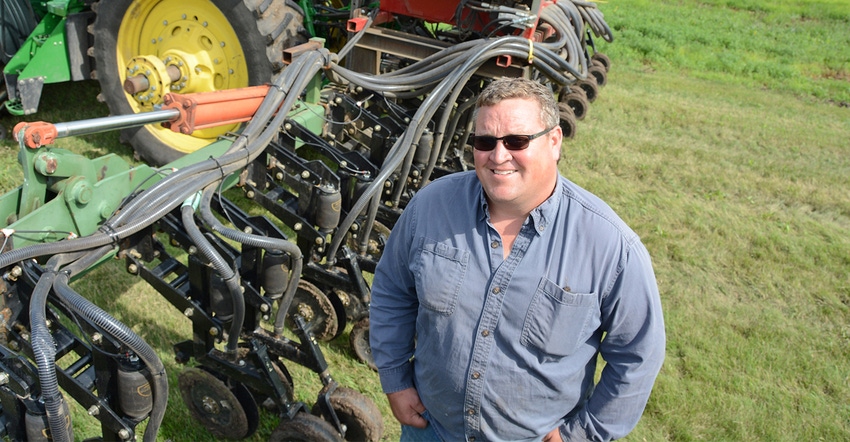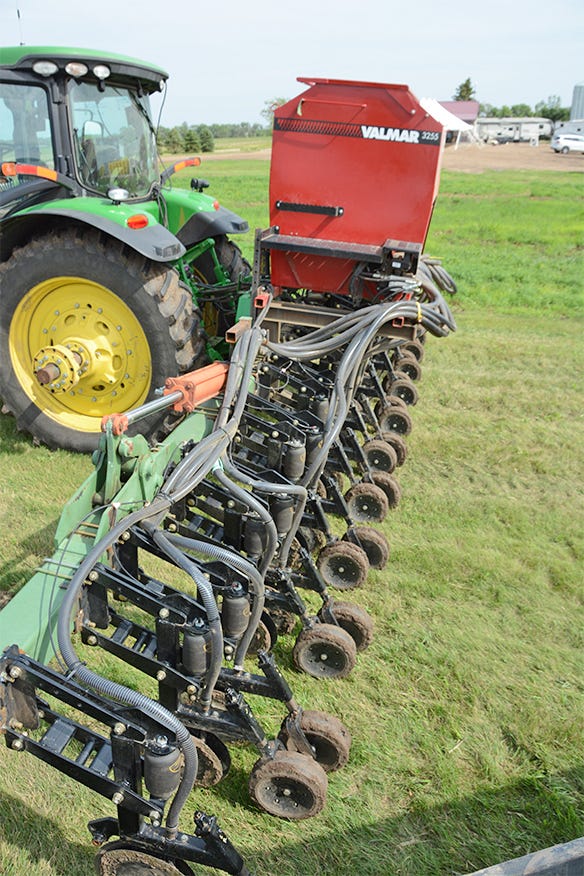August 15, 2018

Joe Fritzsche is earning more money by using cover crops to increase the amount of fall and winter custom grazing he can offer.
The Wessington, S.D., farmer has some extra summer pasture and fall corn stubble, which he offers for custom grazing. For the past four years, he's been interseeding cover crops in some of his corn when it is about knee high so that after harvesting corn he'll have more forage in the corn stalks for cattle to graze in the fall. After combining corn, he lets the cover crop grow three to four weeks before turning cattle out into it.
"I can get a month or two more fall grazing out of it," he says.
He hopes to offer winter-long grazing in the future.
Interseeding attempts
Fritzsche has tried interseeding cover crops into corn a couple several different ways. He's had seed broadcast with a ground rig and flown on with an airplane. If it rains after the seed is spread, those methods work pretty well. If it doesn't rain, the stands can be spotty.
He's drilled cover crop seed into the corn with two different interseeders. Most years, it produces a better stand than spreading the seed on top of the soil.
 PLANTER COMPONENTS: Joe Fritzsche’s 12-row interseeder has double disks openers and a Valmar seed box on an 8-by-8-inch tool bar. The metering system is hydraulically driven.
PLANTER COMPONENTS: Joe Fritzsche’s 12-row interseeder has double disks openers and a Valmar seed box on an 8-by-8-inch tool bar. The metering system is hydraulically driven.

He has rented a 6-row interseeder built by Penn State University, which was provided by Next Level Ag, Alpena, S.D., a crop consulting business. Because he liked how it worked but wanted something that would be faster, Fritzsche built a 12-row interseeder. He modified a 3-point cultivator frame, replacing all the shanks with double disc openers. He mounted a Valmar seed tank on the top of the bar and installed hydraulic drive seed meter.
The interseeder places two rows of cover crop seed between the 30-inch corn rows. Fritzsche typically seeds a mix of annual rye grass, crimson clover and radish.
The interseeder works okay but requires about a 200 hp tractor to operate. "It's pretty heavy and clumsy," Fritzsche says.
If he made another interseeder, he'd make it lighter. Instead of using an 8-by-8-inch toolbar, a 6-by-6-inch bar would be big enough. He would put a ground driven metering system on it rather than a hydraulic system. He'd also use a smaller seed box.
"I thought I would do some custom interseeding, but that hasn't worked out because I don't have an extra person I'd need to operate it," Fritzsche says.
Also, interseeding usually has to be done at the same time crops have to be sprayed, cows have to be moved to pasture and hay has to be baled. Interseeding takes some time, too.
"It's like having to cultivate corn again," Fritzsche says.
If the interseeder were and lighter and simpler to operate, it would be easier to rent the machine to neighbors. They could use their own tractors and run it themselves.
Fencing and water
Few of Fritzsche's corn fields have permanent border fences, but that's not a problem. His wife, Lisa, does most of the fencing. She puts up electric fence with step-in posts. Concrete blocks serve as corner posts. Each block measures 2-by-3-by-3 foot and weighs 2,000 pounds. They move the concrete blocks with a tractor or skid steer loader.

MOBILE CORNERS: Joe Fritzsche uses 200-pound concrete blocks as electric fence corner posts. To hold the poly wire, bolted an electric insulator to an angle iron attached the angle iron to the concrete block.

Natural or piped water is available in cornfields that are grazed.
Not perfected
"I'm not an expert," Fritzsche says of cover crops. "I am still trying to figure out how to make it work."
But he has found he can generate some additional custom grazing income from cover crops. The income is important because — while improving soil health is valuable — "you can't take worms to the banker yet," he says.
You May Also Like




